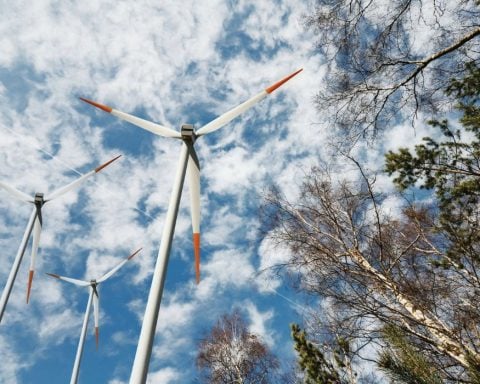Anne-Raphaëlle Audouin, president and CEO of WaterPower Canada
Elisa Obermann, executive director of Marine Renewables Canada
Francis Bradley, president and CEO of the Canadian Electricity Association
John Gorman, president and CEO of the Canadian Nuclear Association
Michelle Branigan, CEO of Electricity Human Resources Canada
Robert Hornung, president and CEO of the Canadian Renewable Energy Association
In the depths of the Great Depression in the last century, President Franklin D. Roosevelt launched an effort that revolutionized farm life in the United States. The New Deal’s Rural Electrification Act not only put thousands of jobless people to work, it improved quality of life for struggling rural families and greatly increased productivity in agriculture.
As leaders of the organizations that represent the breadth of Canada’s electricity sector, we believe that this country can seize a similar opportunity as it seeks to recover from the steep economic slump precipitated by the COVID-19 pandemic.
Backed by analysis from the International Monetary Fund, the Paris-based International Energy Agency (IEA) recently urged governments around the world to ensure that their economic recovery efforts are used to modernize their energy systems. In August, incoming federal Finance Minister Chrystia Freeland signalled that the restart of Canada’s economy “needs to be green” and that decarbonization “has to be part of it.”
Our country starts with a clear advantage. We are already blessed with a clean electricity system; more than 80% of our power supply comes from non-emitting hydroelectric, nuclear and wind, solar, and marine renewable generation. Our remaining coal-fired power plants are being phased out.
Still, Canada faces huge hurdles in meeting its target of reducing greenhouse gases from 2005 levels by 30% by 2030 and achieving net-zero emissions by 2050, as pledged by the Liberal government. Natural Resources Minister Seamus O’Regan has said those goals will be achieved in significant part through electrification. Currently, electricity supplies only 20% of Canada’s final energy use. We can expand that by electrifying areas of the economy that now rely on fossil fuels, including transportation, industry and buildings.
In its June report, the IEA urged governments to take a number of strategic steps, including accelerating the growth of wind and solar, boosting investments in storage and small modular reactors, and maintaining the bedrock roles for hydroelectric and nuclear.
New technologies will allow us to produce power in more distributed locations, eliminate waste in the system, store electricity for when we need it, and enhance the grid to better serve the needs of digitally sophisticated businesses and residential customers. Governments can support the expansion of electric vehicles (EVs) by offering incentives, investing in charging infrastructure and even mandating that EVs make up a regulated percentage of automakers’ sales. We can use clean electricity to produce hydrogen, in a way that produces no emissions, to fuel industrial processes and large transport trucks and trains.
With a focus on energy efficiency, and as the cost of innovative technology continues to fall, we can ensure that the low-carbon transition is affordable and doesn’t impose a burden on Canadians who may struggle to recover from the economic impacts of the pandemic.
In an open letter published June 29, nearly 50 corporate leaders called for “bold federal investment in a green recovery.” They noted that Canada produces more renewable power than any country other than China and can expand that production to boost exports and lead in innovative technology such as emissions-free hydrogen. Given Canada’s leadership in non-emitting generation, we have an opportunity to grow the role of diverse electricity sources and pursue novel and innovative technologies as we increase the use of electricity in our energy mix.
In approving clean-energy stimulus, the federal government should follow some basic principles:
- target projects that can start quickly or be accelerated;
- reflect Canada’s diverse electricity markets;
- encourage partnerships with Indigenous and other local communities; and
- streamline its own regulatory processes while working with provinces to ensure there are not regulatory barriers to innovation.
However, government must also ensure the financial health of the industry when making these future-proofing investments. The economic battering has left many businesses and residential customers unable to pay their bills. Government can help by offsetting COVID-related costs for industry and continuing to support our customers as they navigate an uncertain economy.
In pursuing an electrification strategy, Ottawa will have to work with provinces that regulate and, in many cases, own the power generation and transmission assets. Projects such as inter-provincial transmission lines that would provide a regional market for clean power clearly need enhanced collaboration between governments. Provincial governments, municipalities, and schools, colleges and universities are obvious candidates for investments in energy efficiency and distributed energy projects that will pay dividends for many years. Efforts need to be coordinated.
All these changes require workers with different skill sets that call for updated training to manage them. Industry actors will need to ensure that there is a plan to recruit and retain that next generation of employees to innovate and manage the grid of the 21st century.
As governments turn to stimulus spending to revitalize Canada’s economy, this country’s long-term decarbonization goals can receive a significant boost if we make clean electricity the country’s single largest energy source. Done right, it will yield an energy system that is affordable, resilient, and ready for the net-zero economy of tomorrow.





